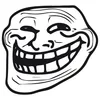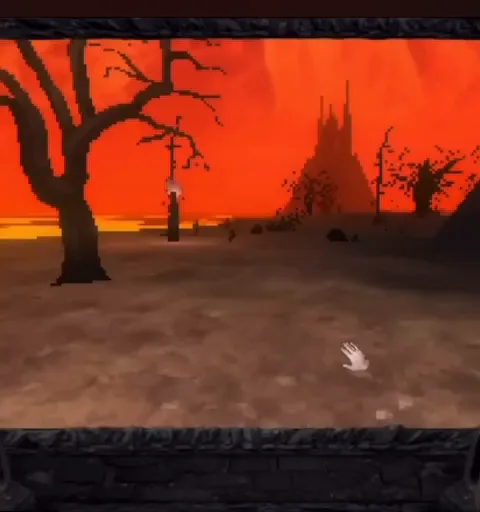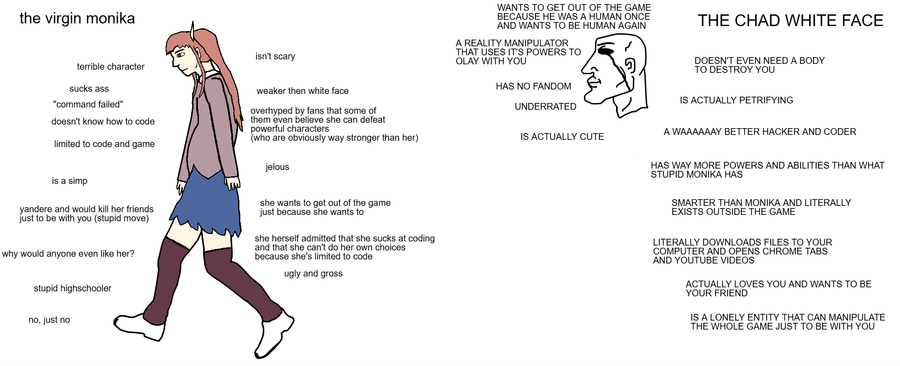"People's Republic of China" and "PRC" redirect here. For the present-day Republic of China, see Taiwan. For other uses, see PRC (disambiguation) and China (disambiguation).
People's Republic of China
中华人民共和国 (Chinese)
Zhōnghuá Rénmín Gònghéguó (pinyin)
Anthem: "March of the Volunteers"Duration: 44 seconds.0:44 Location of the People's Republic of China Territory claimed but not controlledCapitalBeijing
39°55′N 116°23′ELargest city by municipal boundaryChongqing[a]Largest city by urban populationShanghaiOfficial languagesStandard Chinese (de facto)[2]Official scriptSimplified charactersEthnic groups (2020)[3]
91.1% Han Chinese
8.9% others
Religion (2023)[4]
33.4% Buddhism
25.2% no religion
19.6% Taoism
17.7% other folk beliefs
2.5% Christianity
1.6% Islam
Demonym(s)ChineseGovernmentUnitary Marxist–Leninist one-party socialist republic• CCP General Secretary and President[b]Xi Jinping• PremierLi Qiang• Congress ChairmanZhao Leji• CPPCC Chairman[c]Wang Huning• Vice PresidentHan ZhengLegislatureNational People's Congress[d]Formation• First pre-imperial dynastyc. 2070 BCE• First imperial dynasty221 BCE• Establishment of the Republic of China1 January 1912• Proclamation of the People's Republic1 October 1949Area• Total9,596,961 km2 (3,705,407 sq mi)[e][8] (3rd/4th)• Water (%)2.8[5]Population• 2024 estimate 1,408,280,000[f][9] (2nd)• Density147/km2 (380.7/sq mi) (83rd)GDP (PPP)2025 estimate• Total $39.438 trillion[g][10] (1st)• Per capita $28,008[10] (73rd)GDP (nominal)2025 estimate• Total $19.535 trillion[10] (2nd)• Per capita $13,873[10] (70th)Gini (2021) 35.7[11]
medium inequalityHDI (2022) 0.788[12]
high (75th)CurrencyRenminbi (元/¥)[h] (CNY)Time zoneUTC+8 (CST)Calling code
China,[i] officially the People's Republic of China (PRC),[j] is a country in East Asia. With a population exceeding 1.4 billion, it is the second-most populous country after India, representing 17.4% of the world population. China spans the equivalent of five time zones and borders fourteen countries by land[k] across an area of nearly 9.6 million square kilometers (3,700,000 sq mi), making it the second-largest country by land area.[l] The country is divided into 33 province-level divisions: 22 provinces,[m] 5 autonomous regions, 4 municipalities, and 2 semi-autonomous special administrative regions. Beijing is the country's capital, while Shanghai is its most populous city by urban area and largest financial center.
China is considered one of the six cradles of civilization, with the first human inhabitants in the region arriving during the Paleolithic. By the late 2nd millennium BCE, the earliest dynastic states had emerged in the Yellow River basin. The 8th–3rd centuries BCE saw a breakdown in the authority of the Zhou dynasty, accompanied by the emergence of administrative and military techniques, literature, philosophy, and historiography. In 221 BCE, China was unified under an emperor, ushering in more than two millennia of imperial dynasties including the Qin, Han, Tang, Yuan, Ming, and Qing. With the invention of gunpowder and paper, the establishment of the Silk Road, and the building of the Great Wall, Chinese culture flourished and has heavily influenced both its neighbors and lands further afield. However, China began to cede parts of the country in the late 19th century to various European powers by a series of unequal treaties.
After decades of Qing China on the decline, the 1911 Revolution overthrew the Qing dynasty and the monarchy and the Republic of China (ROC) was established the following year. The country under the nascent Beiyang government was unstable and ultimately fragmented during the Warlord Era, which was ended upon the Northern Expedition conducted by the Kuomintang (KMT) to reunify the country. The Chinese Civil War began in 1927, when KMT forces purged members of the rival Chinese Communist Party (CCP), who proceeded to engage in sporadic fighting against the KMT-led Nationalist government. Following the country's invasion by the Empire of Japan in 1937, the CCP and KMT formed the Second United Front to fight the Japanese. The Second Sino-Japanese War eventually ended in a Chinese victory; however, the CCP and the KMT resumed their civil war as soon as the war ended. In 1949, the resurgent Communists established control over most of the country, proclaiming the People's Republic of China and forcing the Nationalist government to retreat to the island of Taiwan. The country was split, with both sides claiming to be the sole legitimate government of China. Following the implementation of land reforms, further attempts by the PRC to realize communism failed: the Great Leap Forward was largely responsible for the Great Chinese Famine that ended with millions of Chinese people having died, and the subsequent Cultural Revolution was a period of social turmoil and persecution characterized by Maoist populism. Following the Sino-Soviet split, the Shanghai Communiqué in 1972 would precipitate the normalization of relations with the United States. Economic reforms that began in 1978 moved the country away from a socialist planned economy towards an increasingly capitalist market economy, spurring significant economic growth. A movement for increased democracy and liberalization stalled after the Tiananmen Square protests and massacre in 1989.
China is a unitary one-party socialist republic led by the CCP. It is one of the five permanent members of the UN Security Council; the UN representative for China was changed from the ROC to the PRC in 1971. It is a founding member of several multilateral and regional organizations such as the AIIB, the Silk Road Fund, the New Development Bank, and the RCEP. It is a member of the BRICS, the G20, APEC, the SCO, and the East Asia Summit. Making up around one-fifth of the world economy, the Chinese economy is the world's largest economy by PPP-adjusted GDP, the second-largest economy by nominal GDP, and the second-wealthiest country, albeit ranking poorly in measures of democracy, human rights and religious freedom. The country has been one of the fastest-growing major economies and is the world's largest manufacturer and exporter, as well as the second-largest importer. China is a nuclear-weapon state with the world's largest standing army by military personnel and the second-largest defense budget. It is a great power, and has been described as an emerging superpower. China is known for its cuisine and culture and, as a megadiverse country, has 59 UNESCO World Heritage Sites, the second-highest number of any country.
Etymology
Main article: Names of China
China (today's Guangdong), Mangi (inland of Xanton), and Cataio (inland of China and Chequan, and including the capital Cambalu, Xandu, and a marble bridge) are all shown as separate regions on this 1570 map by Abraham Ortelius.
The word "China" has been used in English since the 16th century; however, it was not used by the Chinese themselves during this period. Its origin has been traced through Portuguese, Malay, and Persian back to the Sanskrit word Cīna, used in ancient India.[15] "China" appears in Richard Eden's 1555 translation[n] of the 1516 journal of the Portuguese explorer Duarte Barbosa.[o][15] Barbosa's usage was derived from Persian Chīn (چین), which in turn derived from Sanskrit Cīna (चीन).[20] The origin of the Sanskrit word is a matter of debate.[15] Cīna was first used in early Hindu scripture, including the Mahabharata (5th century BCE) and the Laws of Manu (2nd century BCE).[21] In 1655, Martino Martini suggested that the word China is derived ultimately from the name of the Qin dynasty (221–206 BCE).[22][21] Although use in Indian sources precedes this dynasty, this derivation is still given in various sources.[23] Alternative suggestions include the names for Yelang and the Jing or Chu state.[21][24]
The official name of the modern state is the "People's Republic of China" (simplified Chinese: 中华人民共和国; traditional Chinese: 中華人民共和國; pinyin: Zhōnghuá rénmín gònghéguó). The shorter form is "China" (中国; 中國; Zhōngguó), from zhōng ('central') and guó ('state'), a term which developed under the Western Zhou dynasty in reference to its royal demesne.[p][q] It was used in official documents as an synonym for the state under the Qing.[27] The name Zhongguo is also translated as 'Middle Kingdom' in English.[28] China is sometimes referred to as "mainland China" or "the Mainland" when distinguishing it from the Republic of China or the PRC's Special Administrative Regions.[29][30][31]
History
Main article: History of China
For a chronological guide, see Timeline of Chinese history.
Prehistory
10,000-year-old pottery, Xianren Cave culture (18000–7000 BCE)
Archaeological evidence suggests that early hominids inhabited China 2.25 million years ago.[32] The hominid fossils of Peking Man, a Homo erectus who used fire,[33] have been dated to between 680,000 and 780,000 years ago.[34] The fossilized teeth of Homo sapiens (dated to 125,000–80,000 years ago) have been discovered in Fuyan Cave.[35] Chinese proto-writing existed in Jiahu around 6600 BCE,[36] at Damaidi around 6000 BCE,[37] Dadiwan from 5800 to 5400 BCE, and Banpo dating from the 5th millennium BCE. Some scholars have suggested that the Jiahu symbols (7th millennium BCE) constituted the earliest Chinese writing system.[36]
Early dynastic rule
Further information: Three Sovereigns and Five Emperors, Xia dynasty, Shang dynasty, Zhou dynasty, Spring and Autumn period, and Warring States period
Yinxu, the ruins of the capital of the late Shang dynasty (14th century BCE)
According to traditional Chinese historiography, the Xia dynasty was established during the late 3rd millennium BCE, marking the beginning of the dynastic cycle that was understood to underpin China's entire political history. In the modern era, the Xia's historicity came under increasing scrutiny, in part due to the earliest known attestation of the Xia being written millennia after the date given for their collapse. In 1958, archaeologists discovered sites belonging to the Erlitou culture that existed during the early Bronze Age; they have since been characterized as the remains of the historical Xia, but this conception is often rejected.[38][39][40] The Shang dynasty that traditionally succeeded the Xia is the earliest for which there are both contemporary written records and undisputed archaeological evidence.[41] The Shang ruled much of the Yellow River valley until the 11th century BCE, with the earliest hard evidence dated c. 1300 BCE.[42] The oracle bone script, attested from c. 1250 BCE but generally assumed to be considerably older,[43][44] represents the oldest known form of written Chinese,[45] and is the direct ancestor of modern Chinese characters.[46]
The Shang were overthrown by the Zhou, who ruled between the 11th and 5th centuries BCE, though the centralized authority of Son of Heaven was slowly eroded by fengjian lords. Some principalities eventually emerged from the weakened Zhou and continually waged war with each other during the 300-year Spring and Autumn period. By the time of the Warring States period of the 5th–3rd centuries BCE, there were seven major powerful states left.[47]
Imperial China
Further information: Chinese Empire and History of China § Imperial China
Qin and Han
The southward expansion of the Han dynasty during the 2nd century BCE
The Warring States period ended in 221 BCE after the state of Qin conquered the other six states, reunited China and established the dominant order of autocracy. King Zheng of Qin proclaimed himself the Emperor of the Qin dynasty, becoming the first emperor of a unified China. He enacted Qin's legalist reforms, notably the standardization of Chinese characters, measurements, road widths, and currency. His dynasty also conquered the Yue tribes in Guangxi, Guangdong, and Northern Vietnam.[48] The Qin dynasty lasted only fifteen years, falling soon after the First Emperor's death.[49][50]
Following widespread revolts during which the imperial library was burned,[r] the Han dynasty emerged to rule China between 206 BCE and 220 CE, creating a cultural identity among its populace still remembered in the ethnonym of the modern Han Chinese.[49][50] The Han expanded the empire's territory considerably, with military campaigns reaching Central Asia, Mongolia, Korea, and Yunnan, and the recovery of Guangdong and northern Vietnam from Nanyue. Han involvement in Central Asia and Sogdia helped establish the land route of the Silk Road, replacing the earlier path over the Himalayas to India. Han China gradually became the largest economy of the ancient world.[52] Despite the Han's initial decentralization and the official abandonment of the Qin philosophy of Legalism in favor of Confucianism, Qin's legalist institutions and policies continued to be employed by the Han government and its successors.[53]
Three Kingdoms, Jin, Northern and Southern dynasties
After the end of the Han dynasty, a period of strife known as Three Kingdoms followed, at the end of which Wei was swiftly overthrown by the Jin dynasty. The Jin fell to civil war upon the ascension of a developmentally disabled emperor; the Five Barbarians then rebelled and ruled northern China as the Sixteen States. The Xianbei unified them as the Northern Wei, whose Emperor Xiaowen reversed his predecessors' apartheid policies and enforced a drastic sinification on his subjects. In the south, the general Liu Yu secured the abdication of the Jin in favor of the Liu Song. The various successors of these states became known as the Northern and Southern dynasties, with the two areas finally reunited by the Sui in 581.[citation needed]
Sui, Tang and Song
The Sui restored the Han to power through China, reformed its agriculture, economy and imperial examination system, constructed the Grand Canal, and patronized Buddhism. However, they fell quickly when their conscription for public works and a failed war in northern Korea provoked widespread unrest.[54][55] Under the succeeding Tang and Song dynasties, Chinese economy, technology, and culture entered a golden age.[56] The Tang dynasty retained control of the Western Regions and the Silk Road,[57] which brought traders to as far as Mesopotamia and the Horn of Africa,[58] and made the capital Chang'an a cosmopolitan urban center. However, it was devastated and weakened by the An Lushan rebellion in the 8th century.[59] In 907, the Tang disintegrated completely when the local military governors became ungovernable. The Song dynasty ended the separatist situation in 960, leading to a balance of power between the Song and the Liao dynasty. The Song was the first government in world history to issue paper money and the first Chinese polity to establish a permanent navy which was supported by the developed shipbuilding industry along with the sea trade.[60]
Between the 10th and 11th century CE, the population of China doubled to around 100 million people, mostly because of the expansion of rice cultivation in central and southern China, and the production of abundant food surpluses. The Song dynasty also saw a revival of Confucianism, in response to the growth of Buddhism during the Tang,[61] and a flourishing of philosophy and the arts, as landscape art and porcelain were brought to new levels of complexity.[62] However, the military weakness of the Song army was observed by the Jin dynasty. In 1127, Emperor Emeritus Huizong, Emperor Qinzong of Song and the capital Bianjing were captured during the Jin–Song wars. The remnants of the Song retreated to southern China and reestablished the Song at Jiankang.[63]
Yuan
China's first emperor, Qin Shi Huang, is famed for having united the Warring States' walls to form the Great Wall of China. Most of the present structure dates to the Ming dynasty.
The Mongol conquest of China began in 1205 with the campaigns against Western Xia by Genghis Khan,[64] who also invaded Jin territories.[65] In 1271, the Mongol leader Kublai Khan established the Yuan dynasty, which conquered the last remnant of the Song dynasty in 1279. Before the Mongol invasion, the population of Song China was 120 million citizens; this was reduced to 60 million by the time of the census in 1300.[66] A peasant named Zhu Yuanzhang overthrew the Yuan in 1368 and founded the Ming dynasty as the Hongwu Emperor. Under the Ming dynasty, China enjoyed another golden age, developing one of the strongest navies in the world and a rich and prosperous economy amid a flourishing of art and culture. It was during this period that admiral Zheng He led the Ming treasure voyages throughout the Indian Ocean, reaching as far as East Africa.[67]
Ming
In the early Ming dynasty, China's capital was moved from Nanjing to Beijing. With the budding of capitalism, philosophers such as Wang Yangming critiqued and expanded Neo-Confucianism with concepts of individualism and equality of four occupations.[68] The scholar-official stratum became a supporting force of industry and commerce in the tax boycott movements, which, together with the famines and defense against Japanese invasions of Korea (1592–1598) and Later Jin incursions led to an exhausted treasury.[69] In 1644, Beijing was captured by a coalition of peasant rebel forces led by Li Zicheng. The Chongzhen Emperor committed suicide when the city fell. The Manchu Qing dynasty, then allied with Ming dynasty general Wu Sangui, overthrew Li's short-lived Shun dynasty and subsequently seized control of Beijing, which became the new capital of the Qing dynasty.[70]
Qing
The Qing conquest of the Ming and expansion of the empire
The Qing dynasty, which lasted from 1644 until 1912, was the last imperial dynasty of China. The Ming-Qing transition (1618–1683) cost 25 million lives, but the Qing appeared to have restored China's imperial power and inaugurated another flowering of the arts.[71] After the Southern Ming ended, the further conquest of the Dzungar Khanate added Mongolia, Tibet and Xinjiang to the empire.[72] Meanwhile, China's population growth resumed and shortly began to accelerate. It is commonly agreed that pre-modern China's population experienced two growth spurts, one during the Northern Song period (960–1127), and other during the Qing period (around 1700–1830).[73] By the High Qing era China was possibly the most commercialized country in the world, and imperial China experienced a second commercial revolution by the end of the 18th century.[74] On the other hand, the centralized autocracy was strengthened in part to suppress anti-Qing sentiment with the policy of valuing agriculture and restraining commerce, like the Haijin during the early Qing period and ideological control as represented by the literary inquisition, causing some social and technological stagnation.[75][76]
Fall of the Qing dynasty
Further information: Century of humiliation, Opium Wars, First Sino-Japanese War, and Boxer Rebellion
The Eight-Nation Alliance invaded China to defeat the anti-foreign Boxers and their Qing backers. The image shows a celebration ceremony inside the Chinese imperial palace, the Forbidden City after the signing of the Boxer Protocol in 1901.
In the mid-19th century, the Opium Wars with Britain and France forced China to pay compensation, open treaty ports, allow extraterritoriality for foreign nationals, and cede Hong Kong to the British[77] under the 1842 Treaty of Nanking, the first of what have been termed as the "unequal treaties". The First Sino-Japanese War (1894–1895) resulted in Qing China's loss of influence in the Korean Peninsula, as well as the cession of Taiwan to Japan.[78] The Qing dynasty also began experiencing internal unrest in which tens of millions of people died, especially in the White Lotus Rebellion, the failed Taiping Rebellion that ravaged southern China in the 1850s and 1860s and the Dungan Revolt (1862–1877) in the northwest. The initial success of the Self-Strengthening Movement of the 1860s was frustrated by a series of military defeats in the 1880s and 1890s.[79]
In the 19th century, the great Chinese diaspora began. Losses due to emigration were added to by conflicts and catastrophes such as the Northern Chinese Famine of 1876–1879, in which between 9 and 13 million people died.[80] The Guangxu Emperor drafted a reform plan in 1898 to establish a modern constitutional monarchy, but these plans were thwarted by the Empress Dowager Cixi. The ill-fated anti-foreign Boxer Rebellion of 1899–1901 further weakened the dynasty. Although Cixi sponsored a program of reforms known as the late Qing reforms, the Xinhai Revolution of 1911–1912 ended the Qing dynasty and established the Republic of China.[81] Puyi, the last Emperor, abdicated in 1912.[82]
Establishment of the Republic and World War II
Main article: Republic of China (1912–1949)
Further information: 1911 Revolution, Second Sino-Japanese War, Chinese Civil War, and Chinese Communist Revolution
On 1 January 1912, the Republic of China was established, and Sun Yat-sen of the Kuomintang (KMT) was proclaimed provisional president.[83] In March 1912, the presidency was given to Yuan Shikai, a former Qing general who in 1915 proclaimed himself Emperor of China. In the face of popular condemnation and opposition from his own Beiyang Army, he was forced to abdicate and re-establish the republic in 1916.[84] After Yuan Shikai's death in 1916, China was politically fragmented. Its Beijing-based government was internationally recognized but virtually powerless; regional warlords controlled most of its territory.[85][86] During this period, China participated in World War I and saw a far-reaching popular uprising (the May Fourth Movement).[87]
Chiang Kai-shek and Mao Zedong toasting together in 1945 following the end of World War II
In the late 1920s, the Kuomintang under Chiang Kai-shek was able to reunify the country under its own control with a series of deft military and political maneuverings known collectively as the Northern Expedition.[88][89] The Kuomintang moved the nation's capital to Nanjing and implemented "political tutelage", an intermediate stage of political development outlined in Sun Yat-sen's Three Principles of the People program for transforming China into a modern democratic state.[90][91] The Kuomintang briefly allied with the Chinese Communist Party (CCP) during the Northern Expedition, though the alliance broke down in 1927 after Chiang violently suppressed the CCP and other leftists in Shanghai, marking the beginning of the Chinese Civil War.[92] The CCP declared areas of the country as the Chinese Soviet Republic (Jiangxi Soviet) in November 1931 in Ruijin, Jiangxi. The Jiangxi Soviet was wiped out by the KMT armies in 1934, leading the CCP to initiate the Long March and relocate to Yan'an in Shaanxi. It would be the base of the communists before major combat in the Chinese Civil War ended in 1949.
In 1931, Japan invaded and occupied Manchuria. Japan invaded other parts of China in 1937, precipitating the Second Sino-Japanese War (1937–1945), a theater of World War II. The war forced an uneasy alliance between the Kuomintang and the CCP. Japanese forces committed numerous war atrocities against the civilian population; as many as 20 million Chinese civilians died.[93] An estimated 40,000 to 300,000 Chinese were massacred in Nanjing alone during the Japanese occupation.[94] China, along with the UK, the United States, and the Soviet Union, were recognized as the Allied "Big Four" in the Declaration by United Nations.[95][96] Along with the other three great powers, China was one of the four major Allies of World War II, and was later considered one of the primary victors in the war.[97][98] After the surrender of Japan in 1945, Taiwan, along with the Penghu, were handed over to Chinese control; however, the validity of this handover is controversial.[99]
People's Republic
Main article: History of the People's Republic of China (1949–1976)
The founding ceremony of the People's Republic of China was held at 3:00 pm on 1 October 1949. The picture above shows Mao Zedong's announcement of the founding of the People's Republic of China in Tiananmen Square.[100]
China emerged victorious but war-ravaged and financially drained. The continued distrust between the Kuomintang and the Communists led to the resumption of civil war. Constitutional rule was established in 1947, but because of the ongoing unrest, many provisions of the ROC constitution were never implemented in mainland China.[99] Afterwards, the CCP took control of most of mainland China, and the ROC government retreated offshore to Taiwan.
On 1 October 1949, CCP Chairman Mao Zedong formally proclaimed the People's Republic of China in Tiananmen Square, Beijing.[101] In 1950, the PRC captured Hainan from the ROC[102] and annexed Tibet.[103] However, remaining Kuomintang forces continued to wage an insurgency in western China throughout the 1950s.[104] The CCP consolidated its popularity among the peasants through the Land Reform Movement, which included the state-tolerated executions of between 1 and 2 million landlords by peasants and former tenants.[105] Though the PRC initially allied closely with the Soviet Union, the relations between the two communist nations gradually deteriorated, leading China to develop an independent industrial system and its own nuclear weapons.[106]
The Chinese population increased from 550 million in 1950 to 900 million in 1974.[107] However, the Great Leap Forward, an idealistic massive industrialization project, resulted in an estimated 15 to 55 million deaths between 1959 and 1961, mostly from starvation.[108][109] In 1964, China detonated its first atomic bomb.[110] In 1966, Mao and his allies launched the Cultural Revolution, sparking a decade of political recrimination and social upheaval that lasted until Mao's death in 1976. In October 1971, the PRC replaced the ROC in the United Nations, and took its seat as a permanent member of the Security Council.[111]
Reforms and contemporary history
Main articles: History of the People's Republic of China (1976–1989), History of the People's Republic of China (1989–2002), and History of the People's Republic of China (2002–present)
The 1989 Tiananmen Square protests was ended by a military-led massacre.
After Mao's death, the Gang of Four were arrested by Hua Guofeng and held responsible for the Cultural Revolution. The Cultural Revolution was rebuked, with millions rehabilitated. Deng Xiaoping took power in 1978, and instituted large-scale political and economic reforms, together with the "Eight Elders", most senior and influential members of the party. The government loosened its control and the communes were gradually disbanded.[112] Agricultural collectivization was dismantled and farmlands privatized. While foreign trade became a major focus, special economic zones (SEZs) were created. Inefficient state-owned enterprises (SOEs) were restructured and some closed. This marked China's transition away from planned economy.[113] China adopted its current constitution on 4 December 1982.[114]
In 1989, there were protests such those in Tiananmen Square, and then throughout the entire nation.[115] Jiang Zemin was elevated to become the CCP general secretary, becoming the paramount leader. Jiang continued economic reforms, closing many SOEs and trimming down "iron rice bowl" (life-tenure positions).[116][117][118] China's economy grew sevenfold during this time.[116] British Hong Kong and Portuguese Macau returned to China in 1997 and 1999, respectively, as special administrative regions under the principle of one country, two systems. The country joined the World Trade Organization in 2001.[116]
Belt and Road Initiative and related projects
At the 16th CCP National Congress in 2002, Hu Jintao succeeded Jiang as the general secretary.[116] Under Hu, China maintained its high rate of economic growth, overtaking the United Kingdom, France, Germany and Japan to become the world's second-largest economy.[119] However, the growth also severely impacted the country's resources and environment,[120][121] and caused major social displacement.[122][123] Xi Jinping succeeded Hu as paramount leader at the 18th CCP National Congress in 2012. Shortly after his ascension to power, Xi launched a vast anti-corruption crackdown,[124] that prosecuted more than 2 million officials by 2022.[125] During his tenure, Xi has consolidated power unseen since the initiation of economic and political reforms.[126]
Geography
Main article: Geography of China
Topographic map of China
China's landscape is vast and diverse, ranging from the Gobi and Taklamakan Deserts in the arid north to the subtropical forests in the wetter south. The Himalaya, Karakoram, Pamir and Tian Shan mountain ranges separate China from much of South and Central Asia. The Yangtze and Yellow Rivers, the third- and sixth-longest in the world, respectively, run from the Tibetan Plateau to the densely populated eastern seaboard. China's coastline along the Pacific Ocean is 14,500 km (9,000 mi) long and is bounded by the Bohai, Yellow, East China and South China seas. China connects through the Kazakh border to the Eurasian Steppe.
The territory of China lies between latitudes 18° and 54° N, and longitudes 73° and 135° E. The geographical center of China is marked by the Center of the Country Monument at 35°50′40.9″N 103°27′7.5″E. China's landscapes vary significantly across its vast territory. In the east, along the shores of the Yellow Sea and the East China Sea, there are extensive and densely populated alluvial plains, while on the edges of the Inner Mongolian plateau in the north, broad grasslands predominate. Southern China is dominated by hills and low mountain ranges, while the central-east hosts the deltas of China's two major rivers, the Yellow River and the Yangtze River. Other major rivers include the Xi, Mekong, Brahmaputra and Amur. To the west sit major mountain ranges, most notably the Himalayas. High plateaus feature among the more arid landscapes of the north, such as the Taklamakan and the Gobi Desert. The world's highest point, Mount Everest (8,848 m), lies on the Sino-Nepalese border.[127] The country's lowest point, and the world's third-lowest, is the dried lake bed of Ayding Lake (−154 m) in the Turpan Depression.



















1 comment